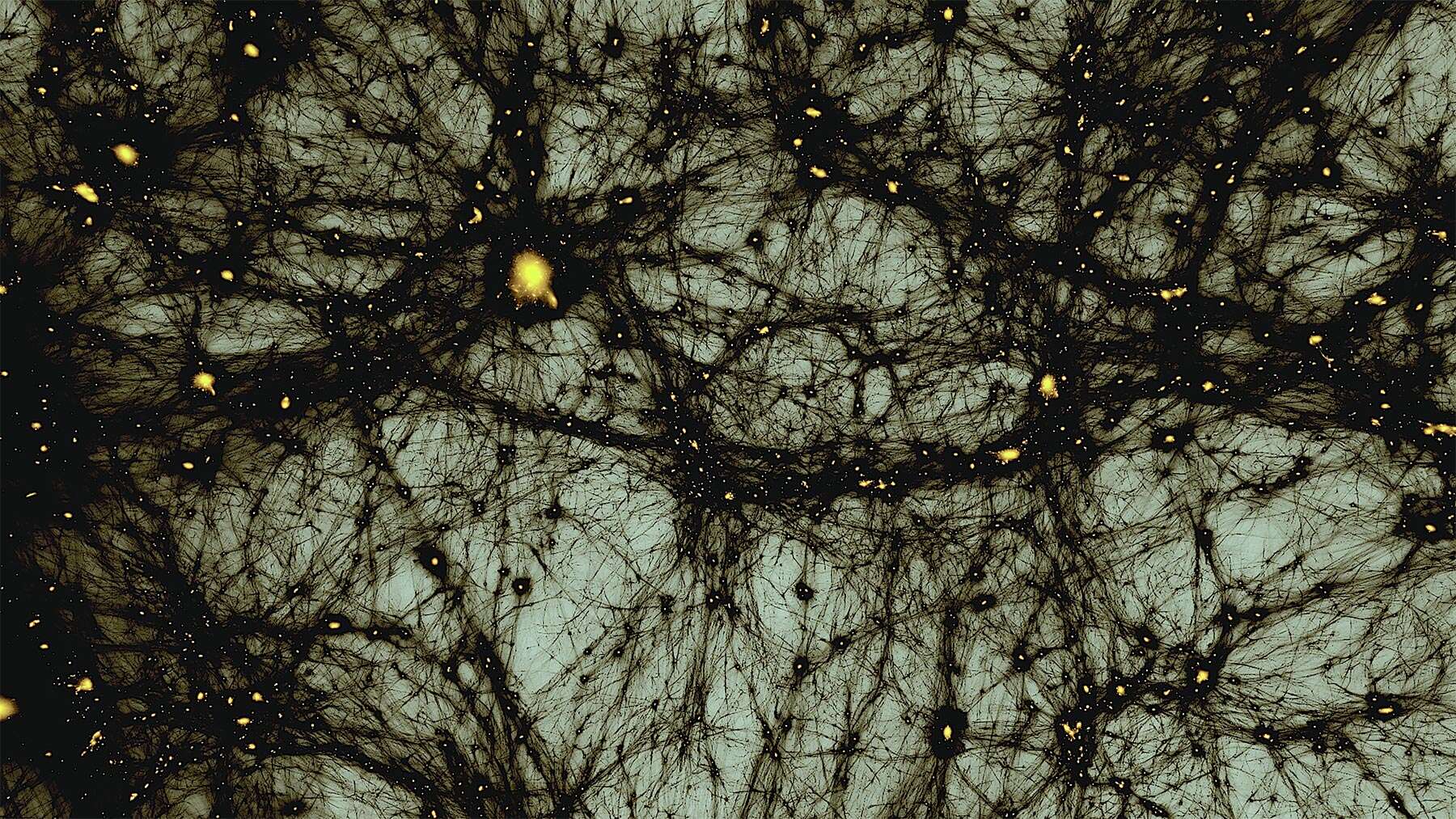Science
Dark Matter vs. MOND: The Battle for Our Cosmic Understanding

The ongoing debate between dark matter and modified Newtonian dynamics (MOND) continues to shape the field of cosmology. On one side, a significant majority of astronomers advocate for dark matter, which is integral to the standard model of cosmology. Conversely, a smaller faction promotes MOND, suggesting that modifications to gravitational laws could better explain the universe’s composition without requiring the introduction of new particles.
This clash is not merely theoretical. It reflects fundamental differences in how scientists interpret astronomical observations. Both camps present compelling arguments and evidence to support their positions, often utilizing the same data to bolster their respective claims. The question remains: how can one discern which theory is more accurate? Until the nature of dark matter is definitively identified, ambiguity will persist, leaving room for MOND to gain traction.
Searching for Weakly Interacting Massive Particles
Recent advancements in dark matter research have intensified the scrutiny of WIMPs, or weakly interacting massive particles, which have long been considered a leading candidate for dark matter. The Lux-ZEPLIN experiment, led by University College London’s Chamkaur Ghag, is currently investigating these elusive particles deep within a former gold mine in South Dakota, USA. The experiment employs a seven-tonne tank of liquid xenon, equipped with photomultiplier tubes, to detect potential interactions between WIMPs and xenon atoms.
Since its inception in 2021, Lux-ZEPLIN has analyzed 280 days of data, revealing no evidence of WIMPs above a mass of 9 GeV/c². These findings significantly constrain the parameters for WIMPs, imposing limits that are nearly five times more stringent than previous tests. Another experiment, XENONnT, based at the INFN Laboratori Nazionali del Gran Sasso in Italy, aims to identify WIMPs by detecting rare nuclear recoil interactions within a liquid xenon target.
Ghag expressed optimism about the future of dark matter research, particularly regarding a next-generation WIMP detector named XLZD. This collaboration seeks to combine the efforts of Lux-ZEPLIN and XENONnT into a single, large-scale experiment that could definitively reveal the presence of WIMPs. The proposed XLZD will contain between 40 and 100 tonnes of xenon and could be operational by the 2030s.
Challenges to the Standard Cosmological Model
The current cosmological framework, known as the lambda cold dark matter (ΛCDM) model, postulates that dark matter constitutes approximately 85% of all matter in the universe. This model has garnered support through observations of the cosmic microwave background radiation and the formation of large-scale structures over the past 13.8 billion years. However, the James Webb Space Telescope (JWST) has recently provided data that challenge some of the model’s predictions.
The JWST’s observations have revealed numerous small galaxies dating back to just 300 to 400 million years after the Big Bang, which are more luminous than the ΛCDM framework would suggest. This unexpected brightness raises questions about the initial mass function (IMF) of stars during the early universe, as it appears there was a higher proportion of massive stars than previously understood.
Astrophysicist Pavel Kroupa from the University of Bonn highlights the formation timelines of giant elliptical galaxies as another conflict with the ΛCDM model. Observations show that these galaxies formed more rapidly than predicted, a phenomenon Kroupa refers to as “downsizing.” A 2020 study by Australian astronomer Sabine Bellstedt and colleagues found that half the mass in present-day elliptical galaxies was established 11 billion years ago. This timing contradicts the expectations that larger galaxies should take longer to form.
Kroupa argues that a shift to MOND could resolve these discrepancies. By modeling galaxy formation under MOND’s principles, he and his team have found that massive gas clouds collapse more quickly, aligning with the observed timelines of early galaxy formation.
Despite these challenges, proponents of dark matter contend that the ΛCDM model remains robust and essential for explaining a wide range of phenomena. Stacy McGaugh, a MOND researcher, acknowledges that while both models have strengths and weaknesses, a new framework must account for all observations to gain acceptance.
The quest for understanding dark matter and the potential validity of MOND continues to provoke lively discussions within the astronomical community. With billion-dollar investments in dark matter research and advanced observational tools like the JWST and the upcoming Nancy Grace Roman Space Telescope, the next decade may yield pivotal discoveries that could reshape our comprehension of the universe.
In conclusion, the debate between dark matter and MOND illustrates the dynamic nature of scientific inquiry, where competing theories can coexist, driving researchers to explore the cosmos with renewed vigor. As new data emerges, the door remains open for significant advancements in our understanding of the fundamental structure of the universe.
-

 Entertainment2 weeks ago
Entertainment2 weeks agoAndrew Pierce Confirms Departure from ITV’s Good Morning Britain
-

 Health4 months ago
Health4 months agoNeurologist Warns Excessive Use of Supplements Can Harm Brain
-

 Health4 months ago
Health4 months agoFiona Phillips’ Husband Shares Heartfelt Update on Her Alzheimer’s Journey
-

 Science2 months ago
Science2 months agoBrian Cox Addresses Claims of Alien Probe in 3I/ATLAS Discovery
-

 Science2 months ago
Science2 months agoNASA Investigates Unusual Comet 3I/ATLAS; New Findings Emerge
-

 Entertainment1 week ago
Entertainment1 week agoGogglebox Star Helena Worthington Announces Break After Loss
-

 Entertainment1 month ago
Entertainment1 month agoTess Daly Honoured with MBE, Announces Departure from Strictly
-

 Science2 months ago
Science2 months agoScientists Examine 3I/ATLAS: Alien Artifact or Cosmic Oddity?
-

 Entertainment3 months ago
Entertainment3 months agoLewis Cope Addresses Accusations of Dance Training Advantage
-

 Entertainment5 months ago
Entertainment5 months agoKerry Katona Discusses Future Baby Plans and Brian McFadden’s Wedding
-

 Science2 months ago
Science2 months agoNASA Investigates Speedy Object 3I/ATLAS, Sparking Speculation
-

 Entertainment5 months ago
Entertainment5 months agoEmmerdale Faces Tension as Dylan and April’s Lives Hang in the Balance









